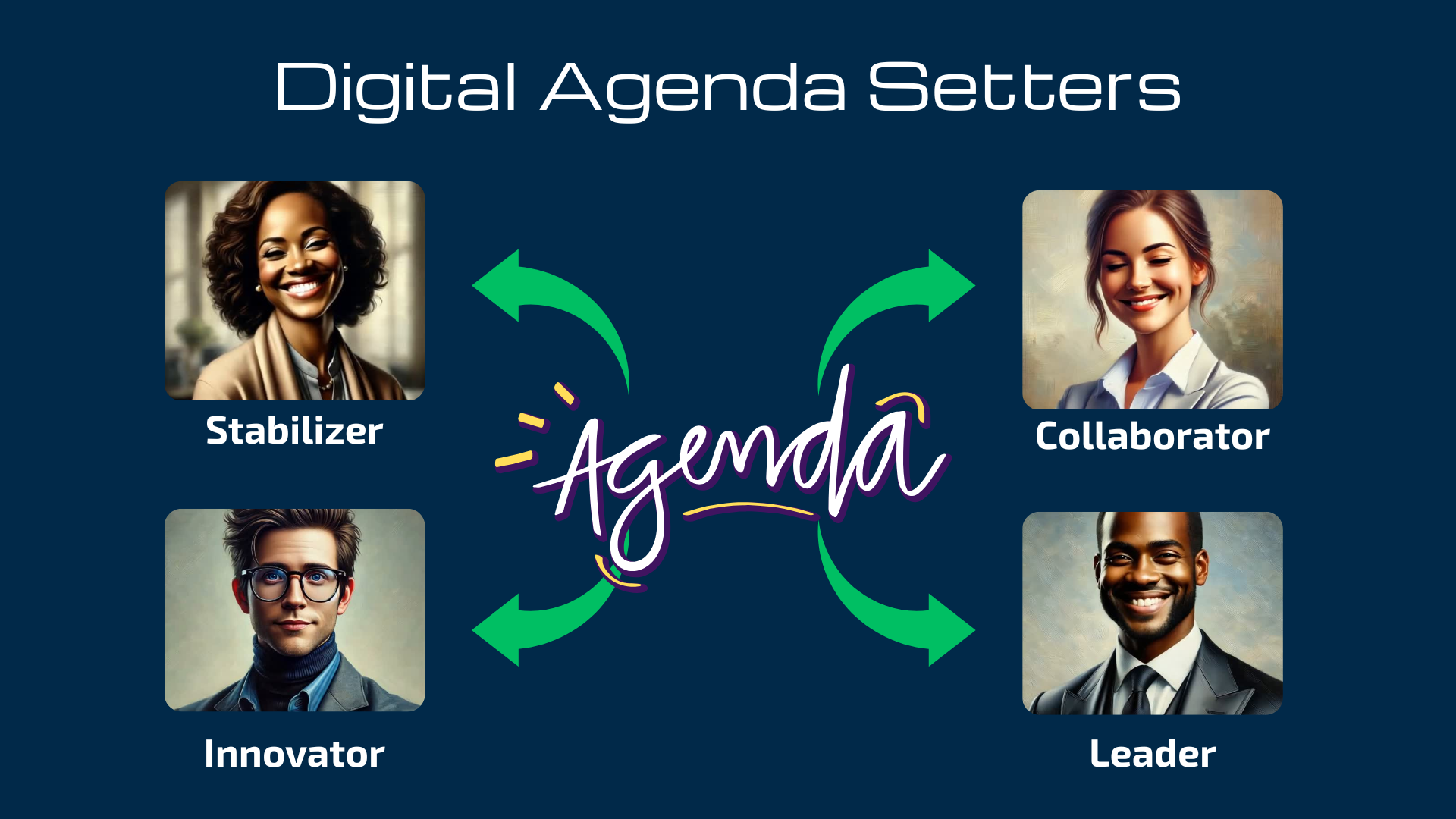Digital Agenda Setters: When Styles Collide Online

In traditional media, agenda setting meant the news didn’t tell us what to think—but it strongly influenced what we thought about.
The same dynamic plays out in digital spaces today. Each post doesn’t just express an idea — it sets the agenda for what others discuss, react to, and share. On LinkedIn especially, one post can spark an entire chain reaction.
But here’s where it gets interesting: how people set the agenda depends on their communication style. And sometimes, those styles collide.
Stabilizers vs. Innovators: The Classic Clash
Take Stabilizers. They value predictability, clarity, and structure. Stabilizers see communication as something to be grounded in what already works — the familiar frameworks, proven methods, and even nostalgic reminders of “how we’ve always done things.”
Now enter the Innovators. They thrive on possibility. Innovators post to showcase what’s next — whether it’s a new tool, a disruptive framework, or a shiny piece of tech that promises to change everything. Their energy is future-focused, bold, and often fast-moving.
So what happens when these two meet in the same digital space?
- Stabilizers see Innovators’ posts as reckless, dismissive of tradition, and destabilizing. To them, chasing every new tech trend or disruptive model feels like abandoning the wisdom of what actually works. They may even see Innovators as a threat.
- Innovators, on the other hand, see Stabilizers’ responses as resistant, outdated, or even a little boring — clinging to “safe” ideas while the world is moving on.
And here’s the tea: a Stabilizer’s post about Innovators never goes unnoticed. The shade is caught almost immediately, and Innovators tend to elevate in response. As folks would say: you can’t argue with a mad scientist, lol.
Leaders vs. Collaborators: Authority Meets Inclusion
While Stabilizers and Innovators wrestle, Leaders and Collaborators set their own digital agendas. Both are explicit communicators in the IntraPersona Matrix, but they use that clarity in very different ways.
- Leaders post with authority. They frame debates, define priorities, and often become the reference point others quote or challenge. Their agenda is control — steering conversations with clarity and conviction.
- Collaborators post to connect. They amplify all styles by reshaping content into unity and shared purpose through re-sharing, polls, added insights, and tagging connections. Their agenda is community — weaving voices together rather than standing apart.
And yes — these two styles sometimes clash.
- Leaders can see Collaborators as watering things down or derailing the focus. After all, a Leader posts to define direction, not to open the floor.
- Collaborators can see Leaders as rigid or even domineering. To them, authority without inclusivity feels out of touch with the digital space, which thrives on interaction.
That tension plays out visibly in comment threads:
- A Leader’s post might set a firm stance (“This is how we should approach communication in hybrid teams.”)
- A Collaborator jumps in, runs a poll, or reshapes the point into a group discussion (“What’s everyone else’s experience with hybrid communication?”).
Both are explicit. Both command attention. But their agendas — control vs. community — pull the digital conversation in different directions.
The Bigger Picture: A Healthy Digital Agenda
When you step back, it’s clear that each style plays a role in shaping the digital conversation:
- Stabilizers remind us of the wisdom in tradition.
- Innovators push us toward new horizons.
- Leaders bring clarity and direction.
- Collaborators ensure voices are heard and connections are made.
Yes, they clash. Stabilizers roll their eyes at Innovators’ shiny new tech. Innovators sigh at Stabilizers’ nostalgia. Leaders get frustrated when Collaborators redirect, while Collaborators bristle at Leaders who won’t open the floor.
But that push and pull isn’t a weakness — it’s the strength of digital communication. The friction keeps conversations alive, balanced, and forward-moving.
In the end, no single style owns the agenda. Together, they create a digital ecosystem where ideas are challenged, refined, and amplified. That’s what makes LinkedIn — and digital communication as a whole — such a powerful space for growth.
So maybe the question isn’t who sets the agenda?
It’s how can we appreciate the role each style plays in shaping it?
